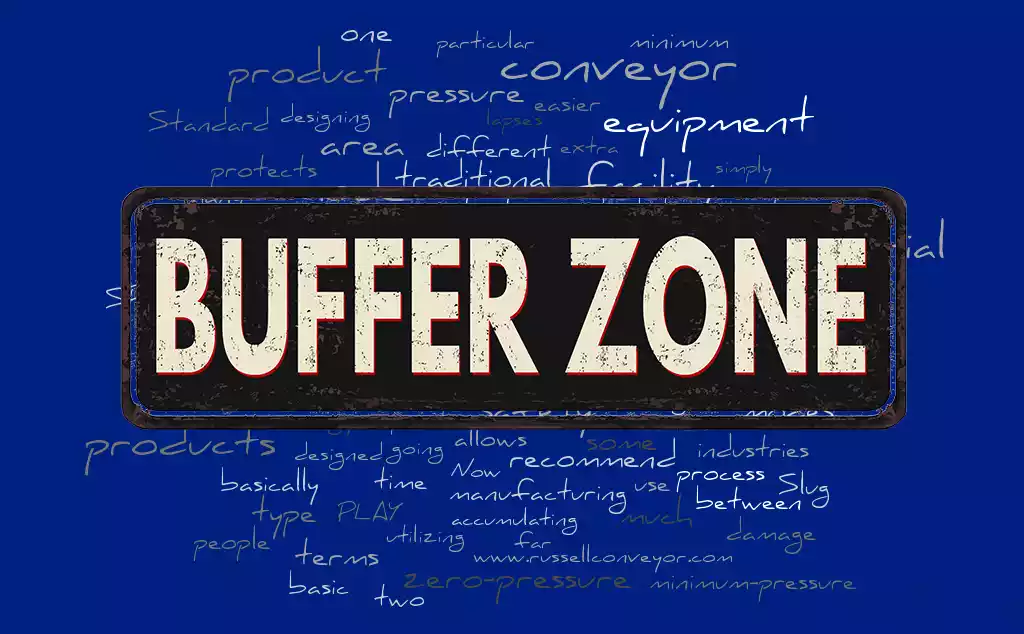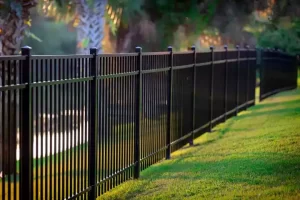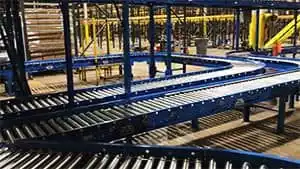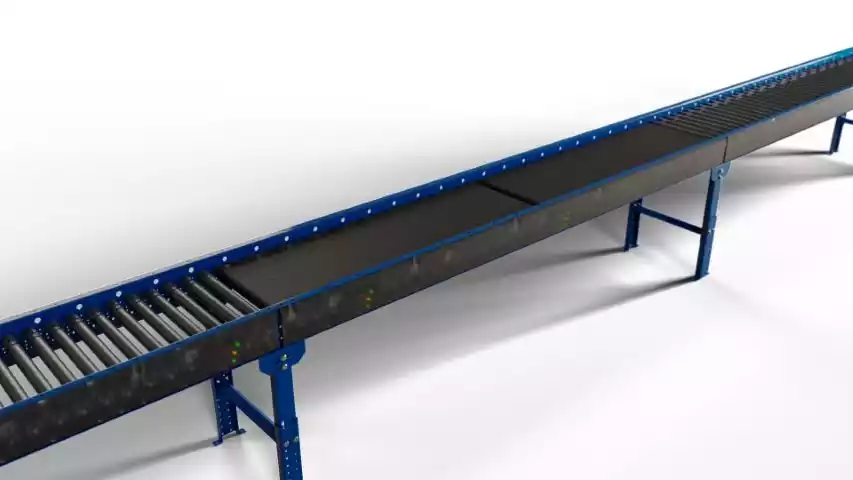Now that we have a grasp on the concept of buffer zones and why we need them in industrial settings, let’s talk about some equipment that utilizes its own buffer zone to help protect against product damage. In particular, we’re referencing the zero-pressure accumulation conveyor. This piece of machinery does not allow products to touch one another, which protects the integrity of those products as they’re being handled.
Zero-pressure accumulation conveyors use a photo eye to determine the proper spacing of items on the conveyor to maximize product flow and minimize product damage. There are several different modes a minimum pressure accumulation conveyor can be set to based on the sizes and weights of products you are handling with it. Among these modes are standard mode, slug mode, and cascade mode. Standard mode basically creates a small buffer zone between products on the conveyor. Slug mode allows all the products to be released at the same time for quicker movement. Cascade mode allows the operator to program how much time lapses between the release of the product on the conveyor.
Although we’ve discussed the zero-pressure or minimum-pressure accumulation conveyor, there are several different options for this type of material handling process, which include: zero-pressure, minimum or medium pressure, or custom accumulation conveyors. These conveyors operate basically the same way, utilizing zone controllers which tell the drive rollers when to activate and move the products to the next zone. After each zone is cleared, the modes mentioned above are activated, which streamlines the material handling process, protects the products being handled, and maximizes the safety of the entire facility.






